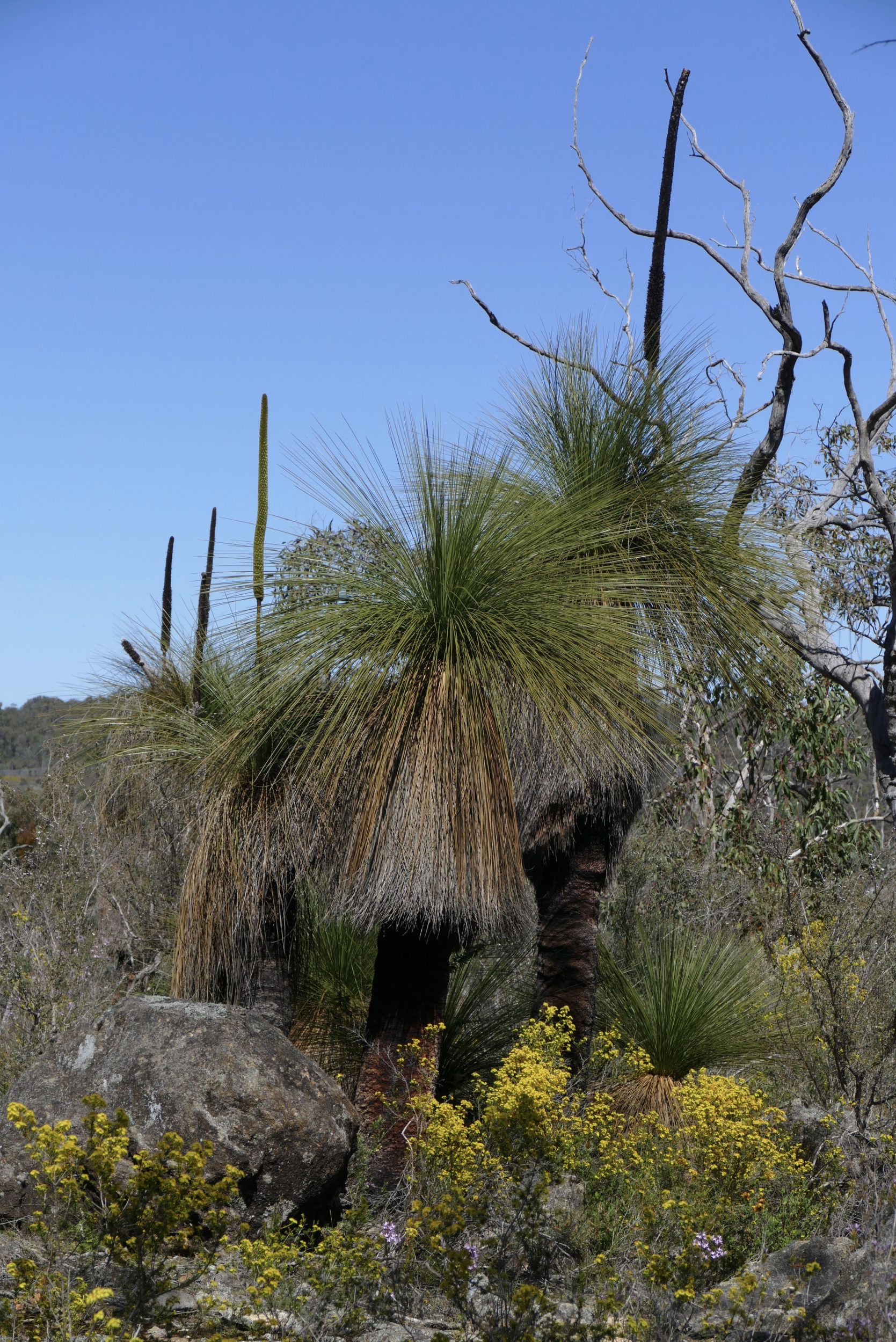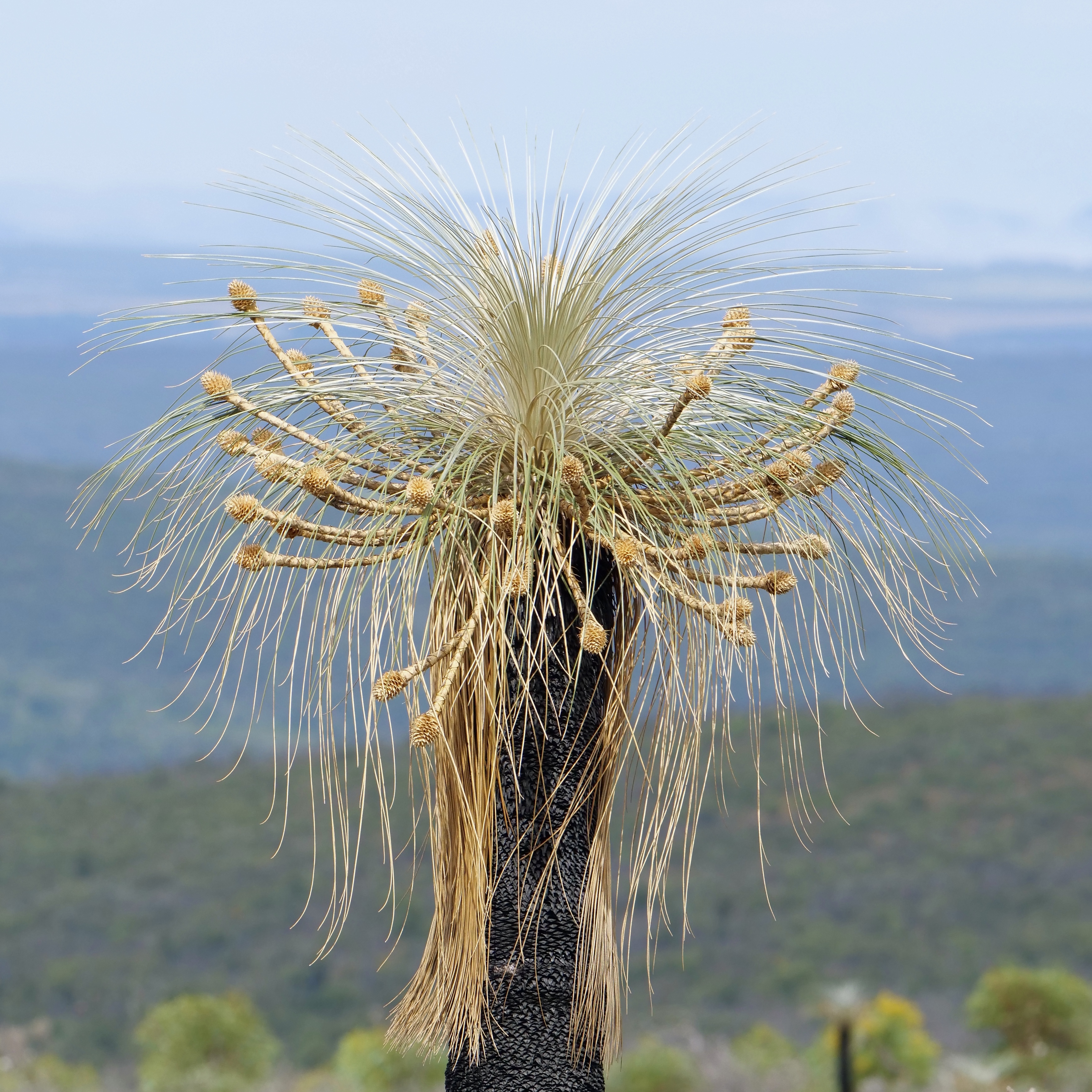…is surely one of “our” planet’s most wonderfully weird plants.
Kingia Australis is the only member of its genus, is not at all closely related to any of the other grass trees, and it grows (very, very slowly, over centuries) only in Australia’s southwestern corner.
As is true of some (not all) other grass trees, Kingia Australis responds to fire by flowering; it and many other Australian plant species do not merely “tolerate” fire – they are fire-dependent.
Many people mistake Kingia for Xanthorrhoea.
The latter is a multi-species Australian genus (of some 30 species, according to some sources…more than 60, according to others) which includes all of Australia’s other grass trees, once generally known as “blackboys”.
To a casual observer, the difference is not obvious, unless the plant is in flower, or has recently flowered.
In bloom, however, each genus looks unmistakably unlike.
On the larger, more tree-like Xanthorrhoea a single, vertical/ish flower spike rises from each “trunk”, which is not really a trunk.

As you can see in the featured image, Kingia has a much more elaborate, “regal” flower arrangement which “crowns” its single pseudo-trunk – a “trunk” which is really an accumulation of leaf bases.
(To see just how extraordinary is the “crown”, I suggest you zoom in on it)
Australia’s grass trees – and only Australia has them – come in various shapes and sizes, but all grow very slowly.
Much the tallest of them all are the tallest Kingia.
When you stand in front of a really tall one – six metres or more – you can be very sure it was well established long before any European eyes ever saw it.
I photographed the featured, splendid individual on the flanks of Toolbrunup, in the Stirling Range, at 1.44 pm on 23 March 2021
It is two and a half to three times taller than I am, so was already growing when European feet first walked into what Europeans named the Stirling Range, in 1826.
Offshore, in 1802, Matthew Flinders made the first recorded European sighting.
The humans who had already known the range for umpteen thousand years called it Koi Kyenunu-ruff, which means mist rolling around the mountains.
In 2019 and 2020 very severe fires burnt through much of the Stirling Range.
Botanically, it is one of the most extraordinary places on earth…and one of the more fragile, already much-compromised and degraded since 1826.
The next Pelican Yoga post is the fruit of our March 2021 walk through a little of “the fire zone”.
